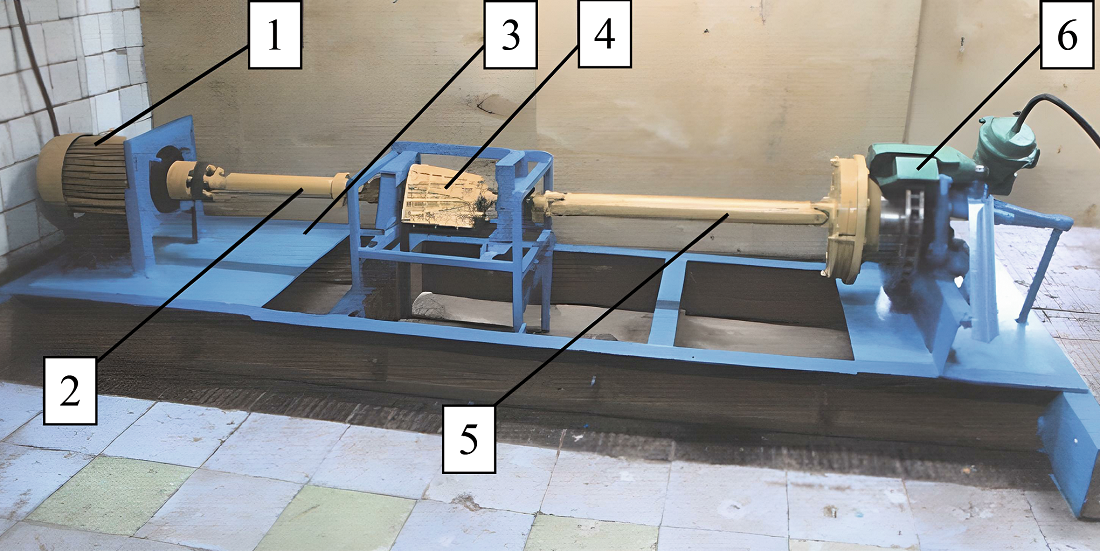Wear-friction properties of friction pairs in disc-pad brakes
DOI:
https://doi.org/10.15587/1729-4061.2023.285699Keywords:
disc-pad brake, friction pair, wear and tear, codes of friction materialsAbstract
This paper reports data on the dynamic coefficient of friction and wear of materials of different types of friction pads and brake discs obtained from experimental research during braking under bench conditions. It was established that on the basis of the chemical composition of the materials of the friction pads with codes, in the temperature range of 100–450 °C with a step of 50 °C, the ratio of the maximum to the minimum wear of the disc varies from 6.0 to 10.0. The value of the disc wear ratio at 800 and 1000 brakings, respectively, in the temperature range of 100–250 °C and 100–450 °C was 7.6 and 14.0. This indicates that for pad materials of type A, B, C, and D under the second thermal regime, the linear wear of the working surfaces of the discs is greater than under the first thermal regime. And for the pad materials of type E and F, the wear of the discs was the same. This indicates that the use of traditional pads is characterized by a higher thermal tension of the disc brake friction pair; the absolute temperature values are in the unfavorable zone of 400–700 °C. That, in turn, could lead to both phase changes and thermal fatigue aging of materials and, as a result, to the deterioration of their tribological and thermophysical characteristics in operation. Thus, the implementation of the method of selecting pad components could improve the performance of disc brake devices of cars
References
- Gudz, G., Zakhara, I., Voitsikhovska, T., Vytvytskyi, V., Ropyak, L. (2022). Temperature Distribution in Parts of the Vehicle Disk Brake. Lecture Notes in Mechanical Engineering, 517–529. doi: https://doi.org/10.1007/978-3-031-16651-8_49
- Nosko, A. L., Tarasiuk, W., Sharifullin, I. A., Safronov, E. V. (2020). Tribotechnical and Ecological Evaluation of Friction Pairs of Brake Devices in Lifting and Transport Machines. Journal of Friction and Wear, 41 (4), 347–353. doi: https://doi.org/10.3103/s106836662004008x
- Cravero, C., Marsano, D. (2022). Flow and Thermal Analysis of a Racing Car Braking System. Energies, 15 (8), 2934. doi: https://doi.org/10.3390/en15082934
- Volchenko, D., Skripnik, V., Zhuravlev, D., Savchyn, Y., Savchyn, M. (2022). Non-uniform Nanocapillary Fluid Cooling of the Drawworks’ Band-Shoe Brake Friction Couples. Lecture Notes in Mechanical Engineering, 584–593. doi: https://doi.org/10.1007/978-3-031-16651-8_55
- Ahmadijokani, F., Shojaei, A., Arjmand, M., Alaei, Y., Yan, N. (2019). Effect of short carbon fiber on thermal, mechanical and tribological behavior of phenolic-based brake friction materials. Composites Part B: Engineering, 168, 98–105. doi: https://doi.org/10.1016/j.compositesb.2018.12.038
- Afzal, A., Abdul Mujeebu, M. (2018). Thermo-Mechanical and Structural Performances of Automobile Disc Brakes: A Review of Numerical and Experimental Studies. Archives of Computational Methods in Engineering, 26 (5), 1489–1513. doi: https://doi.org/10.1007/s11831-018-9279-y
- Zhang, S., Hao, Q., Liu, Y., Jin, L., Ma, F., Sha, Z., Yang, D. (2019). Simulation Study on Friction and Wear Law of Brake Pad in High-Power Disc Brake. Mathematical Problems in Engineering, 2019, 1–15. doi: https://doi.org/10.1155/2019/6250694
- Kernytskyy, I., Volchenko, A., Szlachetka, O., Horbay, O., Skrypnyk, V., Zhuravlev, D. et al. (2022). Complex Heat Exchange in Friction Steam of Brakes. Energies, 15 (19), 7412. doi: https://doi.org/10.3390/en15197412
- Volchenko, N., Volchenko, A., Volchenko, D., Poliakov, P., Malyk, V., Zhuravliov, D. et al. (2019). Features of the estimation of the intensity of heat exchange in self-ventilated disk-shoe brakes of vehicles. Eastern-European Journal of Enterprise Technologies, 1 (5 (97)), 47–53. doi: https://doi.org/10.15587/1729-4061.2019.154712
- Jiregna, I. T., Lemu, H. G. (2021). Thermal stress analysis of disc brake using analytical and numerical methods. IOP Conference Series: Materials Science and Engineering, 1201 (1), 012033. doi: https://doi.org/10.1088/1757-899x/1201/1/012033

Downloads
Published
How to Cite
Issue
Section
License
Copyright (c) 2023 Myroslav Kindrachuk, Dmytro Volchenko, Nataliia Fidrovska, Oleksandr Dukhota, Dmytro Zhuravlev, Mykola Ostashuk, Yurii Porokhovskyi, Volodymyr Kharchenko

This work is licensed under a Creative Commons Attribution 4.0 International License.
The consolidation and conditions for the transfer of copyright (identification of authorship) is carried out in the License Agreement. In particular, the authors reserve the right to the authorship of their manuscript and transfer the first publication of this work to the journal under the terms of the Creative Commons CC BY license. At the same time, they have the right to conclude on their own additional agreements concerning the non-exclusive distribution of the work in the form in which it was published by this journal, but provided that the link to the first publication of the article in this journal is preserved.
A license agreement is a document in which the author warrants that he/she owns all copyright for the work (manuscript, article, etc.).
The authors, signing the License Agreement with TECHNOLOGY CENTER PC, have all rights to the further use of their work, provided that they link to our edition in which the work was published.
According to the terms of the License Agreement, the Publisher TECHNOLOGY CENTER PC does not take away your copyrights and receives permission from the authors to use and dissemination of the publication through the world's scientific resources (own electronic resources, scientometric databases, repositories, libraries, etc.).
In the absence of a signed License Agreement or in the absence of this agreement of identifiers allowing to identify the identity of the author, the editors have no right to work with the manuscript.
It is important to remember that there is another type of agreement between authors and publishers – when copyright is transferred from the authors to the publisher. In this case, the authors lose ownership of their work and may not use it in any way.









